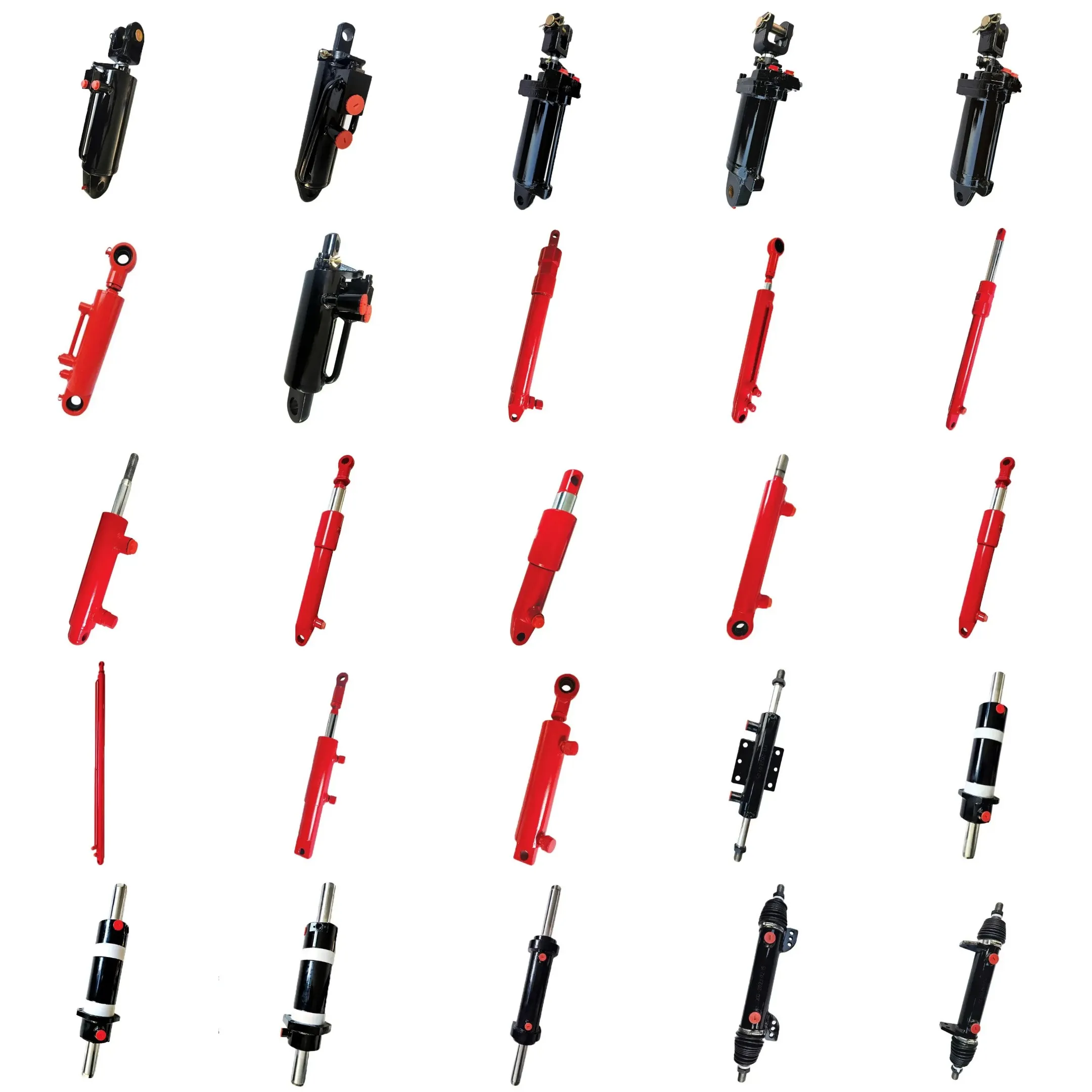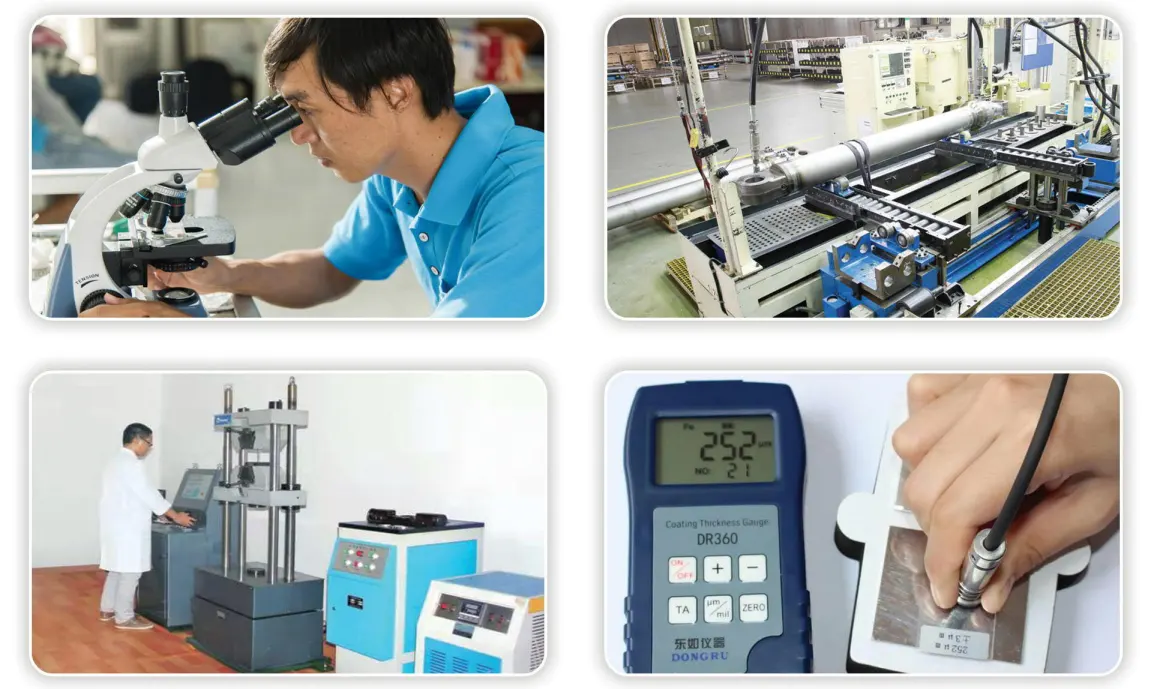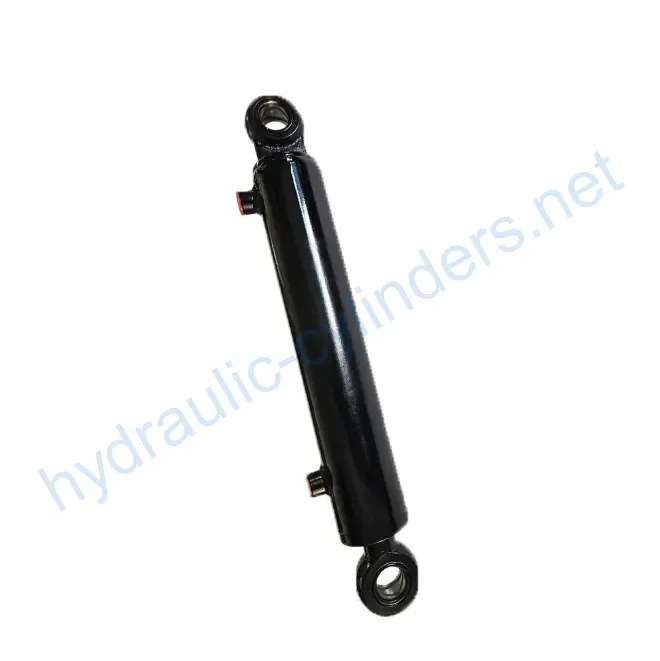Micro Digging Front Tilt Hydraulic Cylinder
Micro Digging Front Tilt Hydraulic Cylinder
Introduction to the Product
The Micro Digging Front Tilt Hydraulic Cylinder is a specialized component designed for heavy machinery, particularly in the field of excavation and construction. This hydraulic cylinder plays a crucial role in controlling the tilt of the digging equipment, allowing for precise handling of materials and improved efficiency during operation. The cylinder converts hydraulic energy into mechanical force, enabling the front-end attachments of excavators and similar machines to move smoothly and effectively. With its robust construction and efficient design, this hydraulic cylinder enhances the overall performance of digging operations, making it an essential tool for contractors and operators alike.
Product Specifications
- Cylinder Diameter: 63mm
- Rod Diameter: 35mm
- Travel: 270mm
- Installation Distance: 500mm
These specifications highlight the cylinder's compact and efficient design, making it suitable for a variety of applications. The 63mm diameter provides a balance between strength and weight, while the 35mm rod diameter ensures durability during operation. The travel distance of 270mm allows for significant movement, enhancing the functionality of the equipment it serves. Finally, the installation distance of 500mm provides versatility in fitting the cylinder into various machinery setups.
Features of the Product
- High Strength and Durability: Built to withstand intense working conditions.
- Efficient Hydraulic Performance: Maximizes lifting and tilting capabilities.
- Compact Design: Ideal for tight spaces and limited installation areas.
- Customizable Options: Available in different sizes and specifications.
- Reliable Sealing Technology: Ensures optimal performance and longevity.
We specialize in manufacturing this product and our hydraulic cylinders can perfectly replace existing models, providing clients with reliable solutions and exceptional performance.
Application Scenarios
1. Excavation Operations
In excavation, the Micro Digging Front Tilt Hydraulic Cylinder is utilized to control the angle of the digging bucket, enabling operators to scoop, lift, and dump materials efficiently. By adjusting the tilt, operators can dig at various angles, improving the effectiveness of the process and reducing time on the job. This precise control enhances the capability of excavators, allowing for better maneuverability and operational flexibility.
2. Construction Sites
On construction sites, this hydraulic cylinder assists in lifting and positioning heavy materials. Its ability to tilt front attachments aids in placing items such as concrete blocks and beams accurately. The cylinder??s robustness ensures it can handle the demands of heavy construction work, which often involves significant weight and stress on machinery.
3. Landscaping Projects
In landscaping, this hydraulic cylinder helps in tasks such as grading and soil removal. The tilt function allows operators to create desired landscapes with precision, shaping areas effectively. By facilitating smooth and controlled movements, it contributes to the aesthetics and functionality of outdoor spaces.
4. Agricultural Machinery
In agriculture, this hydraulic cylinder plays a vital role in controlling attachments like plows and graders. Its ability to tilt enhances the efficiency of soil preparation and crop management tasks, allowing farmers to achieve optimal results with less effort and time.
5. Demolition Work
During demolition, precise control of machinery is paramount. The Micro Digging Front Tilt Hydraulic Cylinder enables the careful dismantling of structures without risking damage to surrounding areas. The tilt capability allows for strategic approaches to breaking down materials, ensuring safety and efficiency in the process.
Design Considerations and Selection Criteria
Load Capacity
The load capacity of the hydraulic cylinder is a critical design aspect, as it must support the weight and force exerted during operations. Engineers assess the expected loads based on specific applications, ensuring the cylinder can handle maximum stress without failure. A higher load capacity contributes to the overall safety and reliability of the machinery.
Sealing Performance
Sealing is vital for preventing hydraulic fluid leaks, which can lead to reduced efficiency and potential hazards. The design incorporates advanced sealing materials to enhance performance. Proper sealing ensures that the hydraulic system functions optimally, reducing maintenance needs and prolonging the cylinder's lifespan.
Durability and Endurance
Durability is paramount, especially in harsh working environments. The choice of materials and construction techniques significantly impacts the cylinder's ability to withstand wear and tear. High-quality materials are selected to endure extreme conditions, ensuring that the hydraulic cylinder remains operational over extended periods, thus minimizing downtime.
Safety Features
Safety is a primary concern in hydraulic cylinder design. Features such as pressure relief valves and safety locks are integrated to prevent accidents and equipment failure. These mechanisms ensure that the system operates within safe parameters, protecting both operators and the machinery from potential malfunctions.
Maintenance and Serviceability
Design considerations also focus on the ease of maintenance. Accessible components allow for straightforward inspections and repairs, which are crucial for minimizing operational disruptions. Regular maintenance is essential for ensuring the longevity and reliability of the hydraulic cylinder, making it a key factor during the design phase.
Sealing and Lubrication
Effective sealing and lubrication are crucial for the optimal performance of hydraulic cylinders. Various seals, such as piston seals and rod seals, are employed to prevent fluid leakage and maintain pressure. Seals made from durable materials like polyurethane and nitrile rubber are selected for their resistance to wear and environmental factors.
The cylinder body and threaded end surfaces undergo precise machining to enhance wear resistance, ensuring longevity. Regular maintenance involves periodic lubrication with the right type of hydraulic oil, which is essential for reducing friction and prolonging the life of the cylinder. Proper lubrication minimizes wear on seals and internal components, ensuring smooth operation.
Regular Inspection and Preventive Maintenance
- Conduct Regular Inspections: Frequently check for signs of wear, leakage, or damage to prevent major failures.
- Ensure Adequate Lubrication: Maintain proper levels of hydraulic oil to ensure smooth operation and reduce friction.
- Seal Replacement: Regularly monitor seals and replace them as needed to maintain optimal performance.
Each of these maintenance tasks plays an integral role in ensuring the hydraulic cylinder operates efficiently. Regular inspections allow for early detection of potential issues, while adequate lubrication is essential for reducing wear. Seal replacements are critical as they ensure the hydraulic system remains sealed, preventing leaks and loss of pressure.
Installation Guidelines
Proper installation is vital for the hydraulic cylinder's performance. Begin by ensuring that the mounting surfaces are clean and free from debris. Align the cylinder accurately with the mounting brackets, ensuring that all hardware is secure. Utilize appropriate mounting brackets to support the cylinder during installation, facilitating correct alignment. Follow the manufacturer's specifications for torque settings and installation distances to prevent misalignment, which can cause premature wear or failure.
Additionally, ensure that hydraulic lines are connected properly without kinks or bends that could restrict fluid flow. After installation, test the hydraulic system to confirm functionality and check for leaks. Regularly monitor the installation to ensure that the cylinder remains properly aligned throughout its use, making adjustments as necessary.
Common Maintenance Tasks
1. Regular Inspections
Regular inspections help identify potential issues before they escalate. Look for signs of wear, leakage, and damage. Inspect hoses and connections for integrity. Early detection can save time and money by preventing unnecessary repairs or replacements.
2. Adequate Lubrication
Lubrication is essential to maintain the hydraulic cylinder??s functionality. Use the recommended hydraulic oil and ensure that it is added at appropriate intervals. Proper lubrication reduces friction and wear on seals, extending the lifespan of the cylinder.
3. Seal Replacement and Calibration Checks
Over time, seals can wear out and may need replacement. Regularly check seals for signs of wear or damage and replace them promptly to prevent leaks. Calibration checks ensure that the hydraulic system operates correctly and safely, maintaining the desired pressure levels and performance.
Safety Considerations and Environmental Factors
When utilizing hydraulic cylinders, safety measures are paramount. Operators should be trained in proper usage and aware of potential hazards. Ensure that all safety features are functioning correctly and that maintenance logs are kept up to date. Environmental factors, such as exposure to extreme temperatures or corrosive substances, should be considered during the selection and maintenance of hydraulic components. Protecting equipment from harsh conditions can significantly extend its lifespan and reliability.
Troubleshooting and Common Issues
- Leakage: Check seals and connections for damage or wear.
- Insufficient Pressure: Inspect hydraulic fluid levels and check for blockages in lines.
- Unusual Noises: Investigate for loose components or lack of lubrication.
- Slow Operation: Check for hydraulic fluid contamination or leaks.
- Overheating: Ensure that the hydraulic system is adequately cooled and fluid levels are appropriate.
To effectively diagnose and resolve these issues, operators should refer to troubleshooting guides and manufacturer specifications. Preventive measures, such as regular maintenance and inspections, can help minimize potential problems and ensure the hydraulic cylinder operates efficiently.

About Our Company
We are a leading manufacturer of hydraulic cylinders, providing a comprehensive range of products to meet the needs of both domestic and international markets. Our expertise and commitment to quality have established us as a trusted supplier in the industry. We offer professional services including customized solutions tailored to client specifications.
Our manufacturing facilities are equipped with state-of-the-art technology, allowing us to produce hydraulic cylinders that meet international standards. We also prioritize after-sales service, ensuring our clients receive continuous support and assistance with their hydraulic needs.

Author: lyl
参观我们的 VR 工厂
通过以下方式参观我们的 VR 工厂
液压缸应用:


